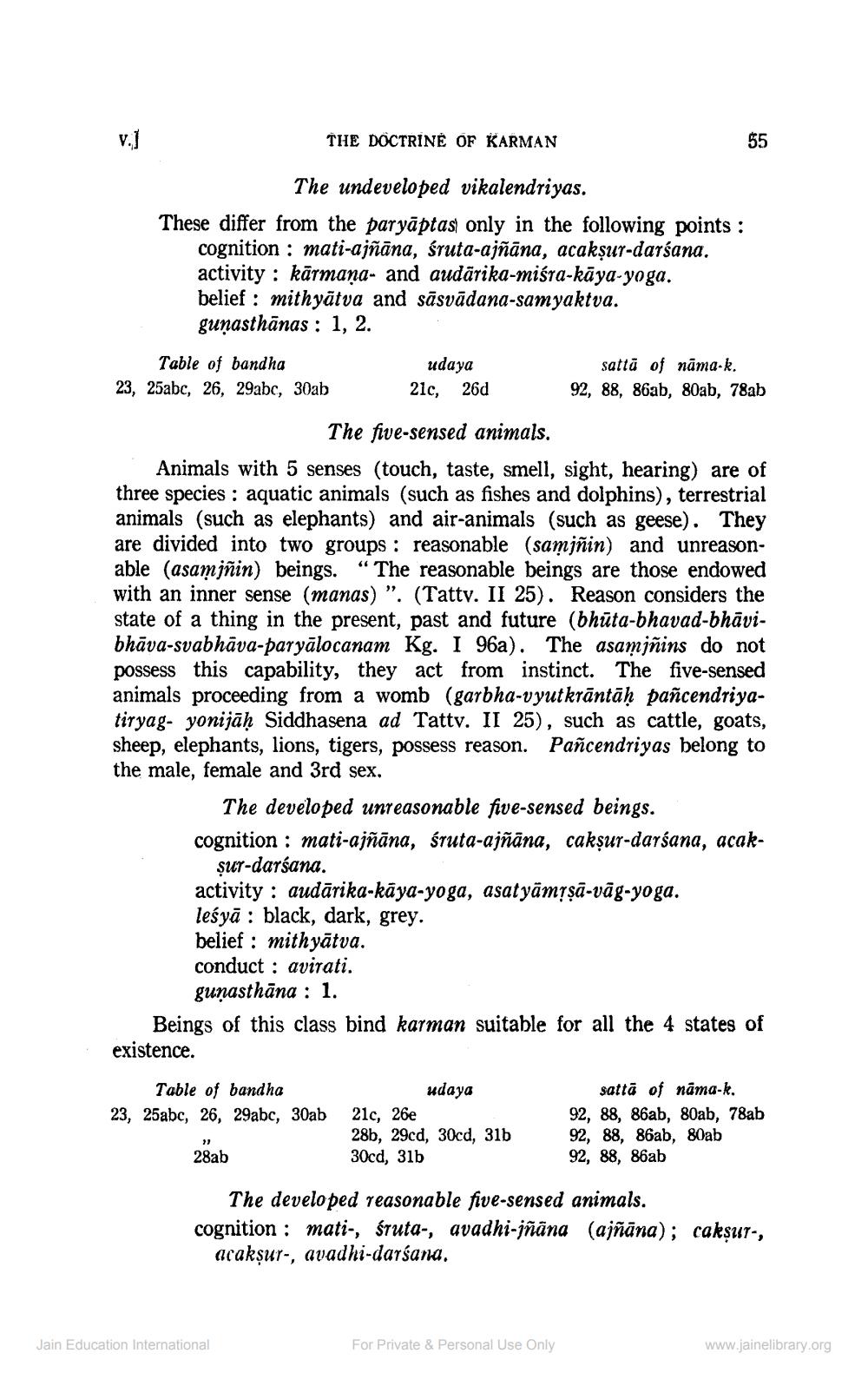________________
V.
THE DOCTRINE OF KARMAN
The undeveloped vikalendriyas. These differ from the paryāptas only in the following points :
cognition : mati-ajñāna, śruta-ajñāna, acakşur-darśana. activity : kārmana- and audārika-miśra-kāya-yoga. belief : mith yātva and sāsvādana-samyaktva. gunasthānas: 1, 2.
Table of bandha 23, 25abc, 26, 29abc, 30ab
udaya 21c, 260
sattā of nāma-k. 92, 88, 86ab, 80ab, 78ab
The five-sensed animals. Animals with 5 senses (touch, taste, smell, sight, hearing) are of three species : aquatic animals (such as fishes and dolphins), terrestrial animals (such as elephants) and air-animals (such as geese). They are divided into two groups: reasonable (samjñin) and unreasonable (asamjñin) beings. “The reasonable beings are those endowed with an inner sense (manas)". (Tattv. II 25). Reason considers the state of a thing in the present, past and future (bhūta-bhavad-bhāvibhāva-svabhāva-paryālocanam Kg. I 96a). The asamjñins do not possess this capability, they act from instinct. The five-sensed animals proceeding from a womb (garbha-vyutkrāntāḥ pañcendriyatiryag- yonijāḥ Siddhasena ad Tattv. II 25), such as cattle, goats, sheep, elephants, lions, tigers, possess reason. Pañcendriyas belong to the male, female and 3rd sex.
The developed unreasonable five-sensed beings. cognition : mati-ajñāna, śruta-ajñāna, cakṣur-darśana, acak
șur-darśana. activity : audārika-kāya-yoga, asatyāmīşā-vāg-yoga. leśyā: black, dark, grey. belief : mith yātva. conduct : avirati.
gunasthāna : 1. Beings of this class bind karman suitable for all the 4 states of existence.
Table of bandha 23, 25abc, 26, 29abc, 30ab
udaya 21c, 26 28b, 29cd, 30cd, 31b 30cd, 31b
sattā of nama-k. 92, 88, 86ab, 80ab, 78ab 92, 88, 86ab, 80ab 92, 88, 86ab
28ab
The developed reasonable five-sensed animals. cognition : mati-, śruta-, avadhi-jñāna (ajñāna); cakşur-,
acakṣur-, avadhi-darśana.
Jain Education International
For Private & Personal Use Only
www.jainelibrary.org




